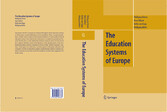Suchen und Finden
Service
The Education Systems of Europe
Wolfgang Hörner, Hans Döbert, Botho von Kopp, Wolfgang Mitter
Verlag Springer-Verlag, 2007
ISBN 9781402048746 , 879 Seiten
Format PDF, OL
Kopierschutz Wasserzeichen
Albania (p. 11)
History of the school system
Development of the school system
From the Ottoman Empire until 1944
The beginnings of an Albanian school system in the sense of a system that employs the Albanian language can be traced back to the nineteenth century. In its initial stage, the national movement aimed at the awakening of a cultural identity. It was later termed National Revival (Rilindja Kombëtare), in line with the usage in other Eastern European countries, and espoused the preservation and instruction of the Albanian language by means of a national education system.
In 1887, the first Albanian schools were opened. Four years later, a school for girls was opened. It was not until 1908, however, that the advocates of a written Albanian language agreed on the use of a modified Roman alphabet.
The emergence of a national school system was inhibited by both the Ottoman authorities and the Orthodox clergy, who adhered to Greek as the language of instruction. In co-operation with Catholic clerics, the Austrian occupying administration attempted to set up a school system in North Albania during the First World War.
An Albanian nation state was established in 1912, however, it was too instable and weak to contribute to the establishment of an education system on the basis of the Ottoman school system. In particular, the low degree of urbanization rendered compulsory education for six- to eleven-year-old boys and girls, introduced in the 1920s, obsolete, this phenomenon was – and is again at present – particularly marked in the mountainous northern areas.
The Education Act of 1921 decreed that elementary schools be subdivided into three stages: first to third grade, fourth to fifth grade, and sixth to eighth grade. Thus, school attendance was obligatory only for the first two stages. Elementary schools were to be established in all villages with at least thirty children of school age.
In the 1920s, less than one fifth of the pupils were girls, but by the late 1930s the figure had risen to one third. In addition, there existed several general public and vocational types of secondary schools, including one teacher training college in Elbasan: several of these were run by foreign bodies. Article 206 of the Royal Constitution of 1 December Albanian citizens’.
1928 stated that ‘elementary education in state schools is compulsory and free for This step was anticipated by the Education Act of 27 June 1928, which aligned the structures of the Albanian education system to the Italian model. In the 1930s, the education system expanded.
Attempts by the dictator Zogu to abolish private schools and thus to nationalize the school system failed. Private schools were permitted again in 1936, which especially encouraged Italian hegemonic efforts. The integration of girls into school progressed gradually. Between 1924 and 1934, the number of girls attending primary and secondary schools rose from 4000 to 15,000 and from 117 to 1205 respectively.
In 1937, forty-two courses for illiterate women were offered in Albania: 1400 of the 1906 enrolled women received a certificate. Whereas the average rate of illiteracy was recorded as 84% in 1928, it reached 97 to 98% in the mountainous districts, in which only clerics were able to read and write.



